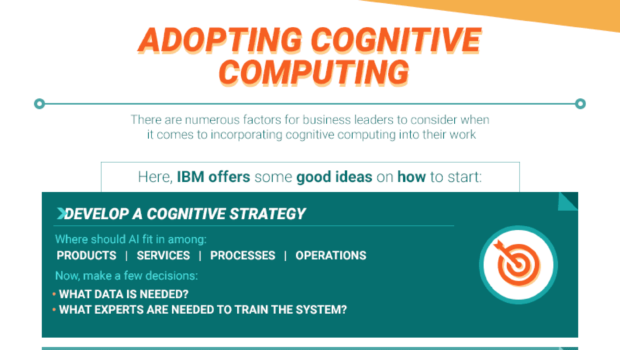How Cognitive Computing is Changing Business [Infographic]
As humans, there’s only so much data we can process. Even the brightest prodigies among us can only store and analyze a fraction of what a computer can. That’s why cognitive computing, a field that uses artificial intelligence to process data, is so exciting. The potential for businesses to transform their businesses with this technology means that cognitive computing is evolving quickly and disrupting the world of business.
AI’s Role in Business
Artificial intelligence in business isn’t intended to replace humans with robots, it’s used to help us understand and find our own biases so we can avoid them, make strategic decisions backed by data, and ensure that we make solid, consistent decisions quickly. It’s best to think of AI as an assistant or a tool, rather than its own entity. Business leaders still need the same skills and knowledge as before, while understanding how to effectively leverage the power of cognitive computing systems. AI can help businesses process data faster and improve their current processes—but only if the implementation of cloud computing is handled properly.
Planning for the Future
Companies that want to transform their business with cognitive computing need to understand the barriers and steps to implementation. Some examples of cognitive systems in action are Amazon’s virtual assistant Alexa and Wellpoint, Inc., a health benefits company that uses AI to analyze information on a patient and cut down on pre-authorization time. Systems like these get better every time they’re used, since machine learning technology allows the AI improve itself.
How Businesses Can Prepare
Most businesses don’t have the resources to implement cognitive computing solutions just yet, but improved accessibility is approaching quickly. Companies can use this time to prepare for cognitive systems and implement the infrastructure that will be needed. In order to effectively use cloud computing, businesses need to develop a strategy for using AI and determine what kinds of data within the organization is relevant to the goals of the problem. They should also start to merge data on the cloud and ensure that necessary security is in place.
For more information on how to prepare for the new world of cognitive computing in business, take a look at this infographic from Ohio University’s Online Master of Business Administration program.
















